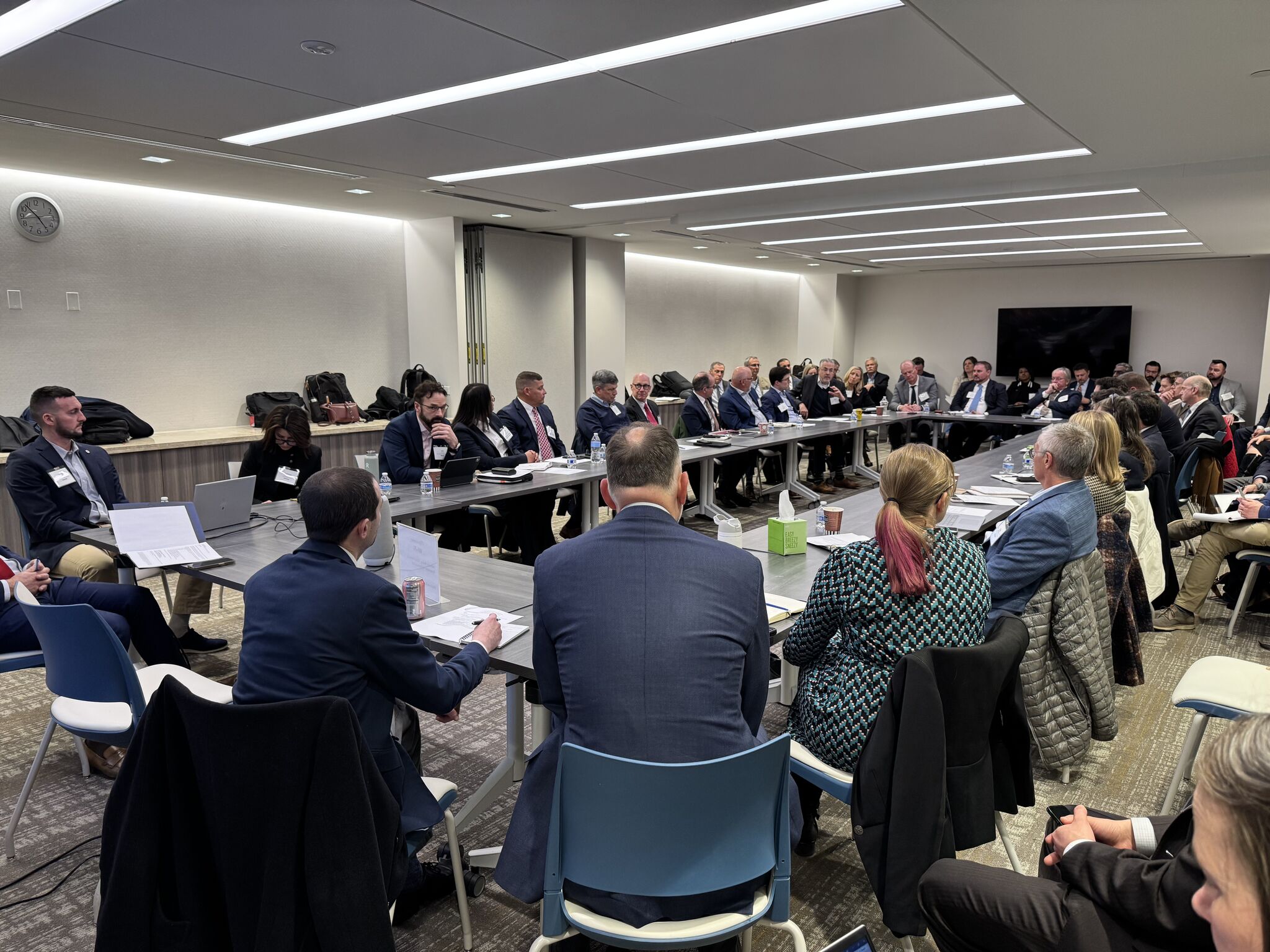Tower Peak Partners launches with two infra strategies on the cards

Tower Peak Partners could soon emerge as a new player in the infrastructure space as the company launches with several investment strategies across private equity, infrastructure and natural capital in the making. The aim is to help the industrial sector to transform and allow for more sustainable natural resource management.
Founded by Denis Sedes and Anthony Catachanas, both formerly of Victory Hill Capital Partners, the manager has found anchor investors in the Latin American family office community, and will have offices in London and New York as well as in the less usual locations of Rio de Janeiro and Panama City.
The inclusion of the latter two locations “suggests a tilt towards economies that are slightly more developed and have a good base of privatisation”, said Catachanas, the firm’s group chief executive officer.
“Europe, certainly North America, are in focus. They’re core markets for us, and we’ll be spending a lot of time uncovering opportunities for investors in those markets. But we also see a lot of opportunity in Latin America, Central America, the Caribbean and South America,” he said. “We’ve done transactions in those markets, so we know them well. What we see in those markets is really a development of private enterprise that doesn’t look like many other parts of the world.”
Key to the GP’s launch is the support from its anchor investors, which “combine North American family offices and some foundations, as well as some Central and South American groups”, said Catachanas.
“There is a big family office community and big pools of wealth in some parts of the world that are still relatively untapped,” he said. “You’ll find, in particular in Latin America, a lot of families own a lot of the industrial concerns, own a lot of natural resources, own a lot of the concessions with local governments.”
“Those families have amassed [capital] for multiple generations and certainly make for fantastic partners on the kinds of endeavours we’re envisaging,” Catachanas added.
In a still struggling fundraising environment, such pockets of untapped potential should be well worth a consideration, something which they are not accustomed to. “When you go into markets that are further afield, not the beaten path, both when it comes to deploying capital and raising it, you often find that you can knock at a door and offer opportunities to people that don’t often get pitched at,” said Catachanas.
Caribbean dreams
As for the coming infrastructure strategies, one will be North America focused and the other global one will include the Caribbean.
“One of the strategies that we’re planning on launching is a global infrastructure strategy that we’ll have as a nexus and remit, Central America, the Caribbean, as well as South America. It will be global. It will touch North America, of course, and Europe, and it may touch some jurisdictions in Asia, selectively. But predominantly, the Americas and Europe is where we think the opportunity really lies,” said Catachanas.
“Then there’s a whole realm of infrastructure that has not transitioned sufficiently well in the Caribbean. Which we find extremely interesting because the Caribbean is not an obvious place that comes to people’s minds when it comes to resolving transition issues.”
A lot of that mental blockage has to do with political risk, but, said Catachanas, “obviously, we won’t be touching jurisdictions like Haiti or Jamaica. But we look at the Dominican Republic, we look at Barbados, Bahamas, we look at Puerto Rico. These are jurisdictions that we like. We like Mexico, Belize, we like Costa Rica”.
“The goal is to help facilitate change, a form of transition. And as I mentioned, I think [the Caribbean] has been underserved and underlooked,” he said. “There are some conversion plays in the region, but we think there’ll be a large component of greenfield exposure in the portfolio.”
Catachanas expects this strategy to appeal to the investor-base, some of which will be DFIs. “If you have the right kinds of projects in the right situation, it’s hard for some investors to say no,” he said, adding: “It goes without saying there is development money involved for those regions. They account, of course, for a large part of the risk appetite for the region.”
However, Catachanas insists that these are risks that other investors would be willing to face too: “Those families in the [Latin American] region, generally speaking, have an appetite and an understanding of the local political dimensions that is a little bit more refined and in-depth than most of us in Europe or North America. The risk appetite you’ll find typically is very different.”
Indeed, the LP support is already substantial. “The anchor investments we’ve received at the moment are in the double-digit teens of millions [of dollars]. We see growth to get into the low to mid-hundreds of millions [of dollars] by Q4 this year, certainly for the private equity strategy and one of the infrastructure strategies. And so we think in about two, three years’ time, we’ll probably be at around $2 billion, $3 billion of assets under management, thereabouts. That’s the game plan.”
Efficient use of natural resources
The other infrastructure strategy in the making will focus on North America and include both greenfield and brownfield assets with a focus on the efficient use of resources.
“We are thinking of looking at scenarios where some natural resources have been underutilised or unloved,” he said, naming wastewater used for cooling data centres. “Where they source the water, how they treat it, what they do with it, can certainly be dealt with in a more efficient way than is currently being handled. Those are the things we’ll be looking at. We’ll also be looking at the usage of water within the context of a variety of other industrial processes that, for example, lead to a higher cost for the core industrial activity because they have to deal with an unwanted or unintended water waste arrangement… There is a lot of optimisations that can be made within the context of managing those sorts of resources.”
Waste, predominantly organic, will be another focus for this fund, and both budding strategies will target mostly value-add opportunities alongside some core infrastructure assets.
For a GP launch with still emerging strategies, Tower Peak Partners has been getting more attention than anticipated, according to Catachanas. “I think the measure of the plan for what we’re trying to do warrants maybe some attention, but we’re getting more attention than we initially thought.”
Other than the founding partners, the company’s management includes the CIO, Wolfgang Bischoff, a former lead originator for Copenhagen Infrastructure Partners’ New Markets Fund, and Luke Apicella, formerly of PGIM.
Not the usual line-up, perhaps, but this may be to the GP’s advantage, as it tries to do things a little differently.
“The capital-raising universe has been plagued with, obviously, a huge amount of homogeneity in private asset investment strategies, and investors are jaded. There’s no question about it. But if you go, as I said before, to further flung or further afield places, you find pockets of capital that are perhaps less saturated. And therein lies the key to a successful raise for these kinds of strategies,” Catachanas said.
Related
How SenseiNode Is Building Proof-of-Stake Infrastructure in Latin America
A lot of attention is paid to the decentralization of the Bitcoin network.Bitcoin miners should set up shop in a number of different jurisdictions in order to p
The Infrastructure of Racial Justice Is Under Attack. We Must…
President Donald Trump began February with a proclamation that Black History Month offered “an occasion to celebrate the contributions of so many Black Am
Bomb threat found “non-credible”: American Airlines after Delhi-bound flight diverted…
American Airlines has said that the "bomb threat on board", due to whi
Big infrastructure investment plans take shape in America
Amtrak and dozens of major industry partners representing construction, manufacturing, rail supply, engineering, and other sectors convened for an industr













